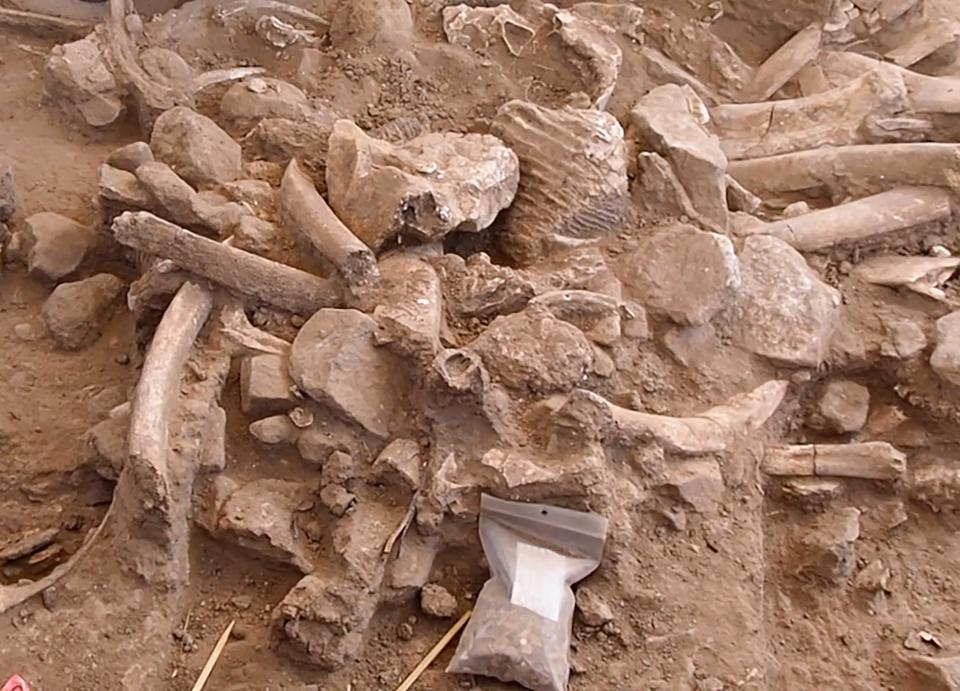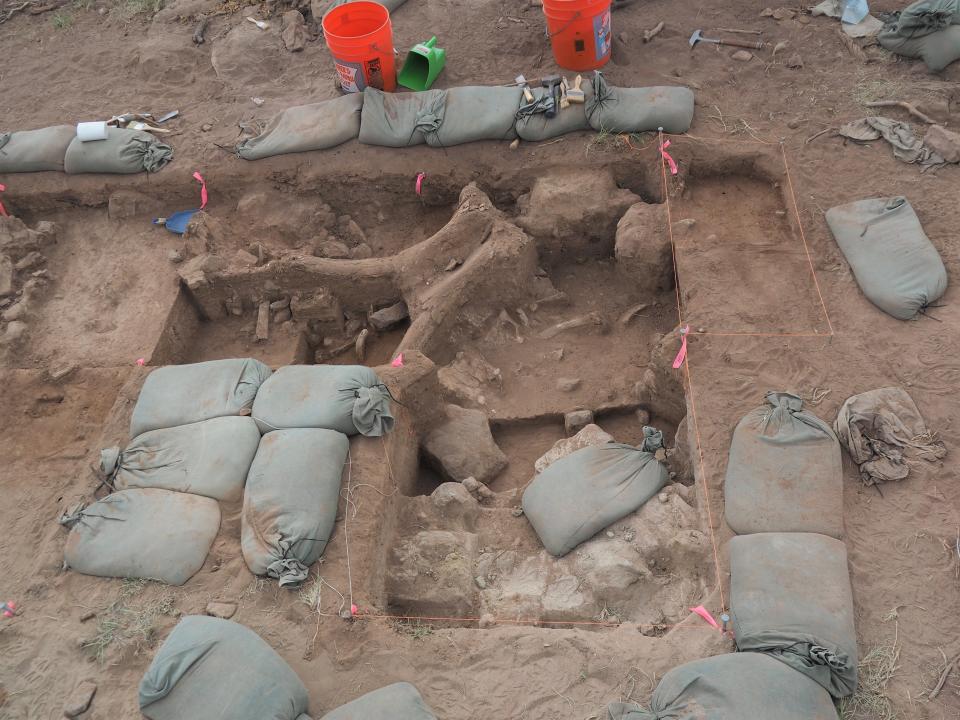When did humans settle in North America? 20,000 years before we once thought, study says
One of the most common beliefs among researchers is that humans first settled in North America 16,000 years ago. But according to a recent fossil find, that may not be true.
In 2013, a tusk was found in New Mexico, as well as a bashed-in mammoth skull and other bones that looked "deliberately broken" and had blunt-force fractures. Carbon dating analysis suggests the pieces are roughly 37,000 years old, a discovery that could have significant implications in tracing humans' earliest existence in the Americas.
The area where the remains were found is an ancient butchering site where humans appeared to process their kills, although it's hard to determine what was done by humans and what was done naturally, said researchers at the University of Texas at Austin. Researchers also found rodent teeth and the remains of birds, fish, snails and a a lizard at the site.
Earlier research led scientists to believe the first humans that settled in North America belonged to the Clovis culture, who left behind stone-wrought tools 16,000 years ago.
But carbon dating analysis on collagen extracted from the mammoth bones date the butchering site at 36,250 to 38,900 years old. That means it's the oldest known site left behind by ancient humans in North America.
The peer-reviewed findings were published in July in Frontiers in Ecology and Evolution.
But that's not the only interesting thing about the discovery, said Timothy Rowe, a professor at the University of Texas at Austin's Jackson School of Geosciences.
Mammoth Cave: Coke bottles, ticket stubs, pre-historic debris discovered in world's longest-known cave system

Bone blades, hammer stones show how 'thorough' these early humans were
The early humans who used the butchering site shaped bones into blades to break down the animals' carcasses, according to Rowe. There are also signs they rendered the animals' fat over a fire.
"The real evidence that we have has to do with the breakage patterns, and how thorough they are," he told USA TODAY. "They must have used rocks or hammer stones to bust the skeleton apart. ... These people would use whatever they could. This site indicates that humans attained a global distribution a long time ago, much earlier than once thought."

How were humans able to kill and process such large animals?
Rowe said the humans responsible for slaying the mammoths could have been hunter-gatherers.
The adults were likely busy breaking down the mammoths' body parts, which is a pretty involved process. They probably skinned them, used their bones to make tools and broke other bones into small pieces and boiled them to extract grease, he said.
The children, if they were present, probably were out catching fish and learning to catch lizards and birds, he said.
More ancient finds: Mummified, baby woolly mammoth frozen over 30,000 years ago found in Canada: 'It’s amazing'
He also said there are a couple of ways they ended up with the mammoths. They may have come across the animals once they had already died, or they ambushed the mammoths, or the animals may have been startled and ran over the edge of a cliff.
"We can't tell really which of these scenarios was responsible for killing the two (mammoths)," he said, noting that the most likely scenario is that the humans ambushed them and processed them in that same spot.
Future discoveries about settlement in the Americas
Rowe said similar findings about human settlements dating so far back have been mostly ignored because they conflict with previous research, but now he believes there's a good chance researchers will find evidence of humans further back in time.


Researchers are on their way to rewriting what had been thought about how people actually came to North America, Central America and South America, said Fumi Arakawa, who directs New Mexico State University's University Museum and teaches anthropology.
When he was a student in the 1990s, Arakawa recalls learning about the Bering Strait Land Bridge and how people crossed it 14,000 to 16,000 years ago. In the 2000s, discussions began about how earlier humans may have used a boat to get to North America, he said.
"Those people came from, probably, northeast Asia," he told USA TODAY. "I think the idea has been accepted by several archaeologists nowadays."
The discovery "is not only for North American archeologists, but probably people who are working in northeast Asia, Japan, or people who are very interested in that topic as well," said Arakawa, who is from Japan.

Saleen Martin is a reporter on USA TODAY's NOW team. She is from Norfolk, Virginia – the 757 – and loves all things horror, witches, Christmas, and food. Follow her on Twitter at @Saleen_Martin or email her at sdmartin@usatoday.com.
This article originally appeared on USA TODAY: Humans settled in North America about 37,000 years ago, study says

